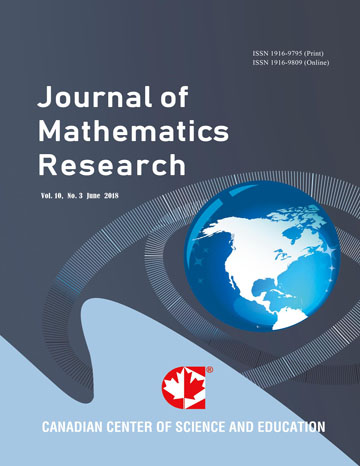Life and Death in a Gang-A Mathematical Model of Gang Membership
- Donna Comissiong
- Joanna Sooknanan
- Balswaroop Bhatt
Abstract
There is increasing gang membership worldwide, but few mathematical models are available describing the growth of gangs in a population. A mathematical model consisting of a system of four coupled, nonlinear ordinary differentialequations is used to divide a population into four groups based on gang affiliation. Demographics and vertical transmission are included in the model. One of the main findings of this research is the conditions under which the gang members become extinct. Bifurcation analyses shows the existence of \textquotedblleft tipping points\textquotedblright\ in the murder rates, gang
recruitment rates and the imprisonment and deterrence rates.
- Full Text:
 PDF
PDF
- DOI:10.5539/jmr.v4n4p10
Index
- ACNP
- Aerospace Database
- BASE (Bielefeld Academic Search Engine)
- Civil Engineering Abstracts
- CNKI Scholar
- DTU Library
- EconPapers
- Elektronische Zeitschriftenbibliothek (EZB)
- EuroPub Database
- Google Scholar
- Harvard Library
- IDEAS
- Infotrieve
- JournalTOCs
- MathGuide
- MathSciNet
- Open policy finder
- RePEc
- ResearchGate
- Scilit
- Technische Informationsbibliothek (TIB)
- The Keepers Registry
- UCR Library
- Universe Digital Library
- WorldCat
Contact
- Sophia WangEditorial Assistant
- jmr@ccsenet.org
